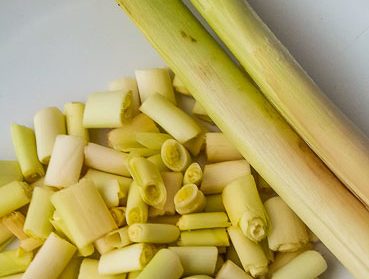Ofe Achara is a delicious and mouth-watering native delicacy indigenous to the Isiala Ngwa and Umuahia people of Abia State, in South Eastern Nigeria. It is usually served to very important visitors and during special occasions which makes it an exotic delicacy. Its satisfying crunchy taste is relished by all.
Achara is gotten from the matured shoots of the edible elephant grass. It has a thick outer dark green skin which encloses the soft edible inner skin with a lighter colour. The outer layers of the shoot are ripped off to expose the tender stem which is broken or cut into smaller pieces and boiled until slightly soft to prepare the achara soup.

The soup is often prepared with moulded egusi balls called akpuruakpu mgbam. It is also be prepared with stockfish and relished as a substitute for meat when there is no meat.
Achara has great nutritional value. This nutritious food is a rich source of amino acids, phosphorous, dietary fibre, magnesium, iron, potassium, copper, selenium, vitamin B1, nicotinic acid, calcium, zinc, sodium, riboflavin, carotene and essential minerals. It has high moisture content and is a good source of protein. Also, it is rich in tannins, alkaloids, flavonoids, saponins and oxalates, but with very little phytate.
Alkaloids, flavonoids, saponins and tannins are known to have antimicrobial activity, as well as other physiological activities.
Flavonoids have a wide range of biochemical and pharmacological activities in mammalian and other biological systems. They possess anti-inflammatory, antioxidant, anti-allergic, hepatoprotective, anti-thrombic, antiviral and anti-carcinogenic activities.
Saponins reduce the uptake of certain nutrients including glucose and cholesterol at the gut and thus they may aid in lessening the metabolic burden that would have been placed on the liver.
Source: Okaraonye, C.C. and Ikewuchi, J.C. (2009). Nutritional and Antinutritional Components of Pennisetum purpureum (Schumach). Pakistan Journal of Nutrition, 8: 32-34.

